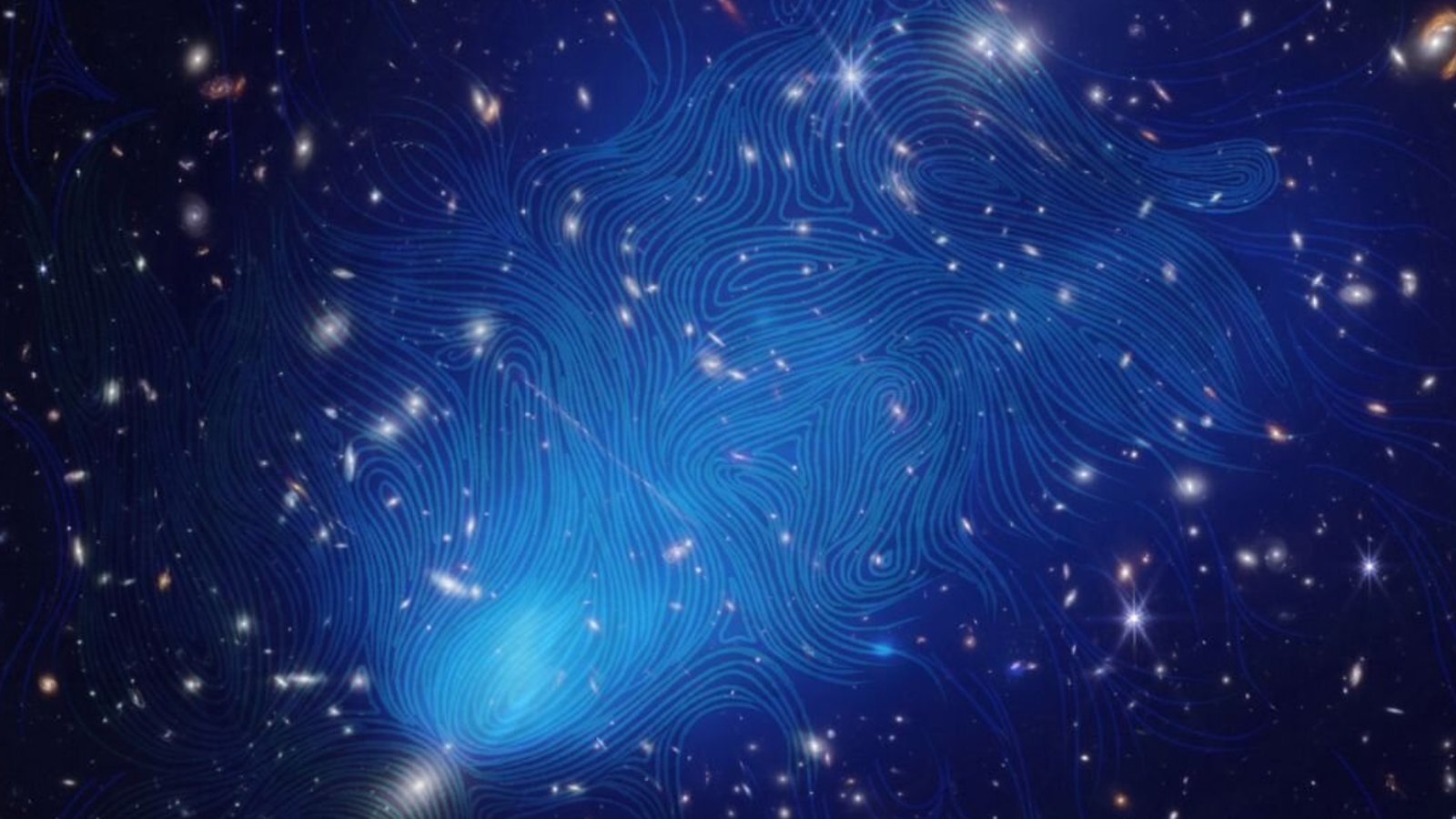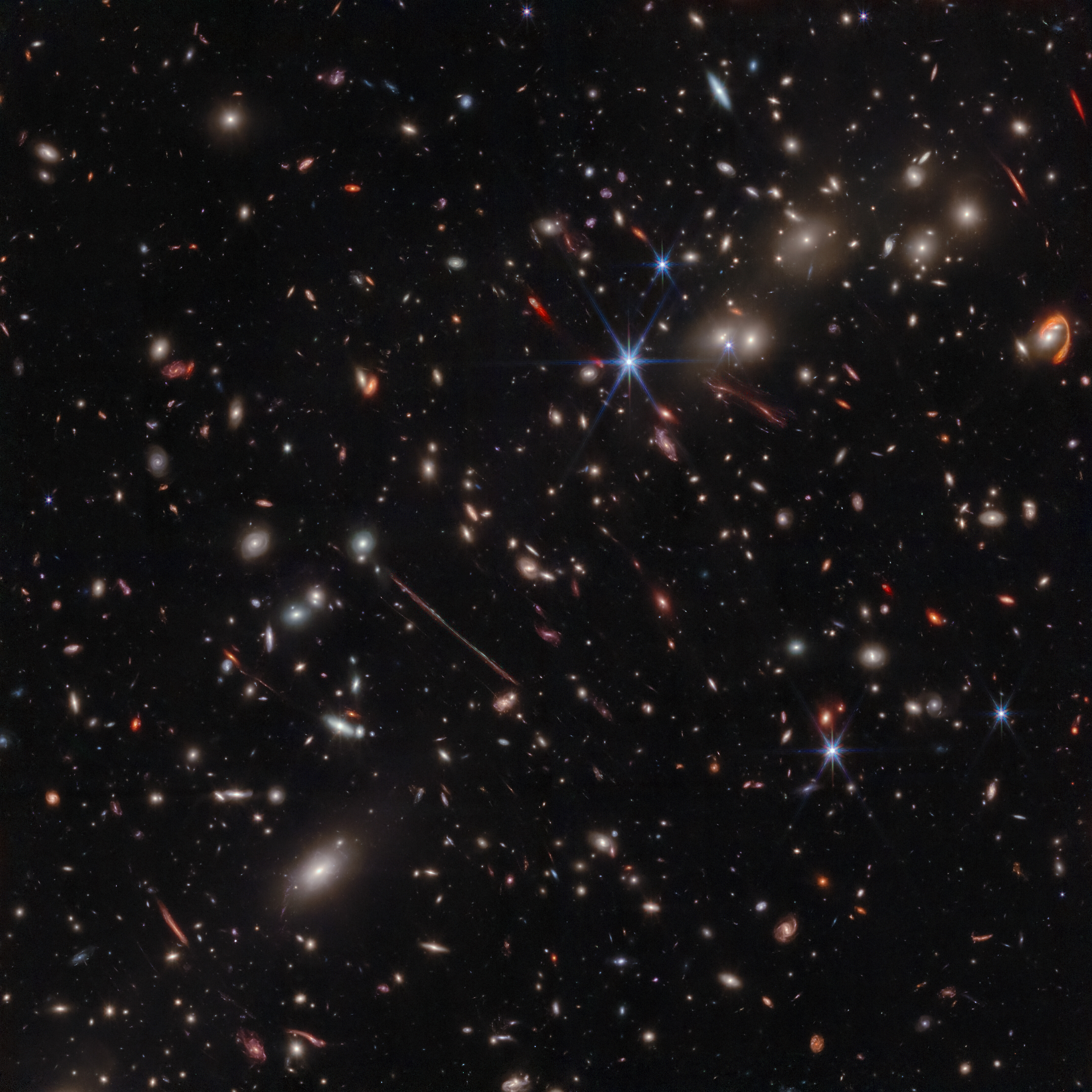Space photo of the week: 'El Gordo' galaxy cluster shakes its guts in largest-ever magnetic field map of space
Researchers recently mapped out the magnetic field of the gargantuan galaxy cluster "El Gordo." The resulting map of swirling magnetic field lines is the largest of its kind.

What it is: A gigantic map of a galaxy cluster's magnetic field.
Where it is: El Gordo galaxy cluster, around 7 billion light-years from Earth.
Why it's so special: For the first time, researchers have sketched out the invisible magnetic field of a gigantic galaxy cluster. The resulting map is the largest of its kind.
Galaxy clusters are the biggest structures in the universe that are bound by gravity. The cluster in question is El Gordo (Spanish for "the Fat One"), which is located around 7 billion light-years from Earth and contains hundreds of galaxies with a combined mass equivalent to more than 2 quadrillion suns.
Scientists revealed the new map, which spans around 6 million light-years across (the width of roughly 60 Milky Way galaxies side by side) in a new study published Feb. 6 in the journal Nature Communications. The researchers also mapped the magnetic fields of four other large galaxy clusters.
Related: Space photo of the week: Hubble catches a 'baseball galaxy' with a black hole heart
"These are the first maps of the detailed structure of magnetic fields on an unprecedentedly large scale," study co-author Alexandre Lazarian, an astronomer at the University of Wisconsin-Madison, told Quanta Magazine.
Get the world’s most fascinating discoveries delivered straight to your inbox.
Researchers created the maps by measuring the movements and energy levels of conductive fluids, such as plasma, that are influenced by the invisible magnetic field lines. The team then used computer simulations to fill in the gaps and outline where the lines must be in the clusters.
The researchers say these maps could help shed more light on cosmic rays — tiny subatomic particles that travel close to the speed of light and can be accelerated by galaxy clusters' magnetic fields. The findings could also help researchers study how galaxy clusters form, evolve and break apart, providing new insight into the universe's largest structures.

Harry is a U.K.-based senior staff writer at Live Science. He studied marine biology at the University of Exeter before training to become a journalist. He covers a wide range of topics including space exploration, planetary science, space weather, climate change, animal behavior and paleontology. His recent work on the solar maximum won "best space submission" at the 2024 Aerospace Media Awards and was shortlisted in the "top scoop" category at the NCTJ Awards for Excellence in 2023. He also writes Live Science's weekly Earth from space series.



